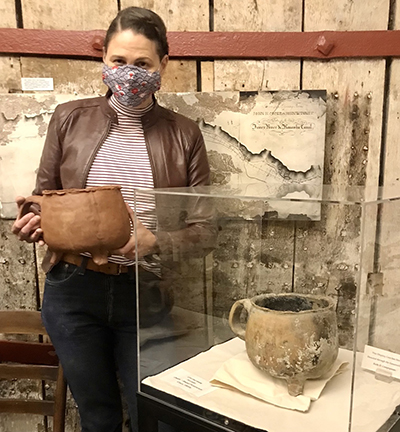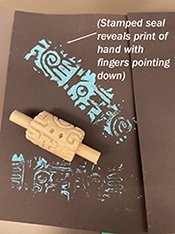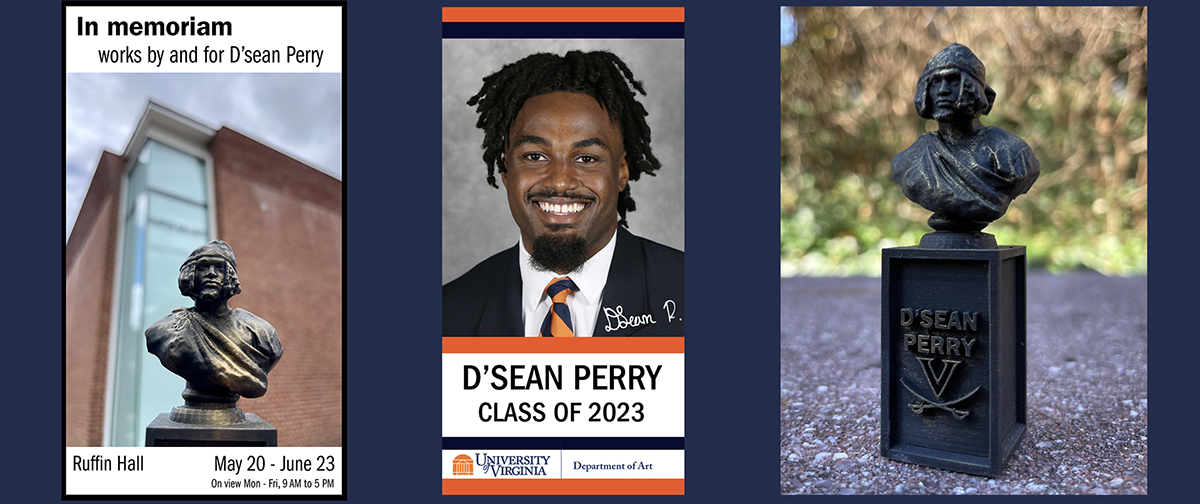Victoria Valdes: A Journey of Innovation and Inspiration
Victoria Valdes, Lab Manager of the 3D Design Lab within the University of Virginia's Department of Art, has been a cornerstone of innovation and creativity for over 15 years. Her lab, affectionately known as "The Lemonade Stand" by students, is a testament to the collaborative spirit and homemade ingenuity that defines her work.
A Legacy of Transformation
Victoria's journey at UVA began as a graduate student, where she was involved in translating and cataloging for an art database that gained national recognition. Her early career was marked by the meticulous task of cataloging a slide collection, a job that laid the groundwork for her pivot to 3D modeling. Noticing a gap in resources for art, archaeology, and art history students, Victoria took it upon herself to bridge this divide. She leveraged her connections with the Fralin Museum and other departments to create a space where 3D models could be produced for educational use. The creation of this space was generously sponsored and funded by retired faculty member Beth Turner.
Pioneering Projects and Collaborations
Victoria's lab has been instrumental in a variety of collaborative and groundbreaking projects. One notable collaboration is the Byzantine Athens project, an ongoing, multi-year research study led by faculty member Fotini Kondyli. Many of the objects involved in the study must remain onsite and under the care of the Greek government, but scanning and photogrammetry has been undertaken by the UVA team, and the scans sent back to the Art Lab. Victoria saw this an opportunity to create 3D models of these objects, to provide art students with new avenues for exploration and learning.
 Her lab has also worked on projects with various historical societies in Virginia. Working with the Fluvanna Historical Society, she and her interns created a 3D printed model of a cook pot used by an enslaved woman who was a culinary expert in her time. They made a model of it with PLA (Polylactic acid, also known as PLA, is a thermoplastic monomer derived from renewable, organic sources such as corn starch or sugar cane); determined the part lines needed to make a mold; then poured clay into the mold and cast it as a new pot that could be used by the Society for live demonstrations. Similarly, working with the Jamestown Historical Society, her team recreated a Native American cooking pot. These projects not only preserve history but also make the items accessible and interactive for the public.
Her lab has also worked on projects with various historical societies in Virginia. Working with the Fluvanna Historical Society, she and her interns created a 3D printed model of a cook pot used by an enslaved woman who was a culinary expert in her time. They made a model of it with PLA (Polylactic acid, also known as PLA, is a thermoplastic monomer derived from renewable, organic sources such as corn starch or sugar cane); determined the part lines needed to make a mold; then poured clay into the mold and cast it as a new pot that could be used by the Society for live demonstrations. Similarly, working with the Jamestown Historical Society, her team recreated a Native American cooking pot. These projects not only preserve history but also make the items accessible and interactive for the public.
Promoting Interactive Art
Victoria spearheaded a project with the Museum at Dumbarton Oaks in Washington, D.C., in collaboration with recent UVA Ph.D. graduate Justin Mann. The exhibit was to be staged in an area of the museum unsuitable for genuine artifacts, so Dr. Mann reached out to the Art Lab to create large scale replicas. Dumbarton Oaks sponsored an intern for a year and requested a list of things from the Medieval and Renaissance period to be recreated for the exhibit. Victoria created a model of the Kolossi Castle, whose dimensions she put into Rhino architecture software, then created textures, windows, colors, rooflines, and after adjusting for shifts in the current building due to settling over time, printed a 3D model of it. Other items for the exhibit included a 4 ½’ sugar mold with funnel; a coat of arms that is carved in marble on the side of the castle; a giant copy of a Byzantine coin – the coin was laser scanned, then printed at 17” to make it easily seen, and gold-leafed; a series of reproductions of plants (such as sugar and coffee) that could be touched; and a series of “sugar sculptures” of fantastic animals from a Renaissance engraving. The exhibit is interactive, larger than life, entertaining, and will be on display until May 2026.

 The Fralin Museum of Art at UVA houses many items that will never be on display, some of which are too fragile to move. An example of this are seals used on envelopes, and further back in history, on tombs. The tomb seals were shaped like rollers, and the rolled seals would print out words or a pattern that would show the tomb had not been disturbed. The museum owns some of the tomb seals, and the education department of the Museum wanted to make copies of them for kids to use in activities. Some produce animal shapes like turtles or frogs, others create unique zig zag shapes. One South American tomb seal, after being 3D printed by Victoria, was rolled for the first time in recent history, and when rolled out, revealed a human hand! (See image to left.)
The Fralin Museum of Art at UVA houses many items that will never be on display, some of which are too fragile to move. An example of this are seals used on envelopes, and further back in history, on tombs. The tomb seals were shaped like rollers, and the rolled seals would print out words or a pattern that would show the tomb had not been disturbed. The museum owns some of the tomb seals, and the education department of the Museum wanted to make copies of them for kids to use in activities. Some produce animal shapes like turtles or frogs, others create unique zig zag shapes. One South American tomb seal, after being 3D printed by Victoria, was rolled for the first time in recent history, and when rolled out, revealed a human hand! (See image to left.)
The Human Touch in Technology
One of the most rewarding aspects of Victoria's work is the value it provides to the UVA community. She was particularly close to D'Sean Perry, an athlete who was passionate about 3D modeling. After his tragic passing, Victoria honored his memory by creating "In Memoriam," an exhibit celebrating his life and displaying the art he created as an art major. She also cast his self-portrait in bronze and distributed copies to his friends and family. This act of kindness and creativity exemplifies the profound impact of her work.

Overcoming Challenges
Managing the 3D Design Lab comes with its own set of challenges. Scheduling and ensuring that all projects are completed on time requires meticulous planning and maintenance of equipment. Victoria and her team of interns work tirelessly to keep the lab running smoothly, often consulting with students to refine their projects and ensure they have the materials they need.
A Vision for the Future
Victoria's vision for the future is one of continued innovation and collaboration. She emphasizes the importance of not wasting materials on meaningless projects and encourages her colleagues to bring their ideas to life through the lab's resources. The physicality of art, she believes, is vital to maintaining one's humanity and staying in touch with oneself.
In her own words, "Making 3D art connected two parts of my life – taking my thoughts or my students’ thoughts, and then putting these thoughts out into the world as a physical object. The art-making process changes a person."
Victoria Valdes' story is one of dedication, creativity, and the transformative power of art and technology. Her work not only enriches the UVA community but also serves as an inspiration for future generations of artists and innovators.
